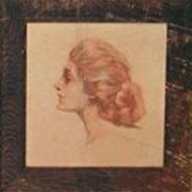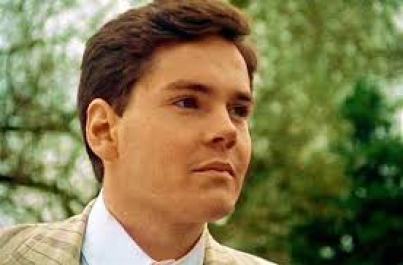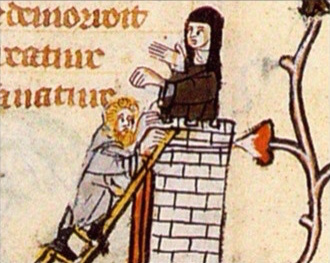There are, obviously, spoilers for the film in this post.

Still from The Danish Girl, starring Alicia Vikander and Eddie Redmayne.
I saw The Danish Girl, the film loosely based on the real story of Lili Elbe, at the beginning of the month. But I’m only now writing this blog post, because it took (as usual) a little while to organise what I wanted to say. The film is a strange mixture. I thought it was subtle in the way it told the characters’ stories, moving and engaging. As you might guess if you know Elbe’s history, it is pretty dark, with some appallingly disturbing scenes: notably, the episode in which a doctor emotionlessly diagnoses Elbe as a homosexual and enforces a ‘cure’ involving radiation of the genitals, and the scenes of Elbe’s horrific pain following a surgery that was crude beyond belief. But – disappointingly – it’s also saccharine in places, with some surprisingly false notes.
First the good: the film is beautifully shot, and worth seeing on those grounds alone. It is truly painterly: a breathtaking series of natural images prepares us for the scene in which we see young Einar Wegener hailed as an up-and-coming artist, the painter who captures the spare, structural and natural beauty of the leafless trees we’ve just seen growing. As the film progresses, the imagery becomes richer, with heavy tactile fabrics, swishing kimonos, drapes and silky scarves. This visual vocabulary, in turn, is echoed in the paintings associated with Gerda Wegener, Einar’s ambitious, talented, and bohemian wife.
The film is strongest when it concentrates on the relationship between these two. Lili Elbe isn’t played as a saint: there were times when you definitely sympathised with Gerda Wegener; times when Elbe’s actions and words seemed selfish, thoughtless, or shallow. This was refreshing: one of the things that annoys me about, for example, Sophia in Orange is the New Black is that she’s almost never allowed to be anything but an anodyne cardboard cut-out, tiredly bringing out clichéd remarks about hairstyles or Our Shared Struggles As Women. By contrast, Elbe comes across as a human being, and at the same time there’s a rare sympathetic portrayal of the struggles Wegener faces. And I could appreciate the film makers’ decision to portray Wegener as a heterosexual woman: it was a good change from the irritating and guilt-inducing contemporary assumption that female sexuality must always be ‘fluid’ and accommodating.
But, a bit of me is quite sad that the film makers decided to edit out the historical part of Elbe and Wegener’s lives during which they lived as an out lesbian couple in 1920s Paris. A quick google of Wegener’s art, made during this period, is eye-opening, and very different from the tasteful, Impressionist-lite images the film substituted – and the image below is definitely one of the politer pieces. But, in place of this, there’s a single scene, in which Elbe rocks an androgynously-tailored, lesbian-chic suit and is momentarily (and delightfully) thrilled to hear a couple of men speculating: “lesbienne?”

Gerda Wegener, ‘Ved Spljlet’ (‘By the Mirror’).
… And then they beat her up. It’s undeniably moving that the film makers’ decided to follow this moment of Elbe’s delight in ‘passing’ with sudden violence from the men, and it’s sadly ironic that she’s treated to the same violence lesbians did and do face for being too easily confused with men. But the film doesn’t really explore the possibility that Elbe – or anyone else – might associate femininity with anything other than dresses and makeup, and certainly not with lesbianism. Indeed, it’s quite hard to interpret that scene of violence as anything other than the film’s own brutal insistence that there is only one legitimate way in which to be female.
And it was this insistence that began to nag away at me as I watched.
In one pivotal scene in the film, Elbe – whose cheerfully bohemian wife is in need of a model to stand in for the absent female subject of her current painting – draws a filmy silk stocking over a strikingly hairy, masculine-looking leg. It’s a moment that’s been criticised, with some viewers arguing that to reduce Elbe’s desire to transition to a single moment of rather coy cross-dressing (ooh! women’s underwear!) is a bit simplistic. My issue was different. We see Vikander’s naked body at several points during the film, and at no time are her legs anything other than perfectly hairless. This is, of course, a tacit nod to twenty-first-century aesthetics: audiences are deemed unable to imagine the possibility of an attractive woman who doesn’t come pre-packed as hair-free, even though it’s highly unlikely a woman living during this period (and wearing the long-skirted fashions Vikander’s character wears) would have been shaving her legs. Vikander’s femininity is socially constructed, but that social construction is actively obscured, hidden, made as invisible as the hair that surely grows on her legs.
I found this telling. I didn’t expect The Danish Girl to break the mould and go for exact historical verisimilitude. I read trash media; I know that women and men alike are (supposedly) transfixed with horror at the sight of a furry female and would be utterly unable to sustain their interest in a film that portrayed one. But that’s the problem. The film works very hard to make us believe that the main character we see is, and always was, a woman; it works against the fact that Redmayne, who acts Elbe, is a male actor. But, because it also makes invisible the performances we demand from female actors (Vikander) and not from male ones (Redmayne), the film lands itself with a problem of confused categories: why is this one leg hairy, when the other is not?
By contrast, the artifice Redmayne uses is highly visible – even too visible, leading to what’s probably the complaint I’ve heard most frequently about the film as a whole. Redmayne, as Lili, spends much of the film batting, fluttering, lowering and raising, his enhanced feminine lashes.
Critics on all sides have weighed in with acidic questions: is this Redmayne’s poor acting?Is it something the director decided? Does Redmayne imagine that being a woman is a kind of performance, a kind of artifice? Does he think transwomen all look like this? What is it? The questions keep coming, because – at root – we’re aware that there’s some visible artifice here, some mannerism, that obtrudes between us and our sympathy with Lili Elbe, the character. But discussing one kind of artifice has, I’d argue, blinded us to another kind, which is hidden in plain sight.
In the film, Redmayne wears lashings of thick mascara. And unlike Vikander’s shaven legs, this isn’t an anachronism. Like quite a lot of cosmetics, mascara is a bit of an irritant. It’s come on a long way since 1933, when a new product on the market caused the death of one woman and the blindness of sixteen more. But, however hypoallergenic a product may be, the advertising boasts of new, un-clumping formulas, lighter-weight versions and waterproof options remind us that painting something onto the hairs around your eyes is never going to be a totally fuss-free option, especially if you’re not used to it. On balance of probability, I’m going to go out on a limb and suggest Eddie Redmayne probably doesn’t wear mascara as a day-to-day habit, and certainly not heavy, thick, dark lashes like the ones in this film. It doesn’t particularly surprise me, then, that he’s batting his eyelashes a fair bit. It’s a natural reaction. And in an actor supposed to be playing a woman, nature looks like artifice.
These details – hairless legs, mascara’d eyes – may seem tiny. But they’re telling examples of the rigid system of expectations society places upon women, the rigid demands to perform femininity. For decades, feminists have been arguing that these performances – these ‘minor’ artifices – are neither transparently innate to women, nor matters of free and natural choice. This film – which might have taken the time to expose the artifice of what it means to be accepted as a ‘real’ woman – instead chose to essentialize differences rooted not in biology, but in the aesthetics of a misogynistic culture.









